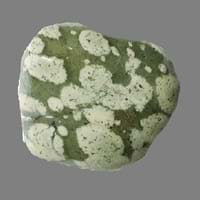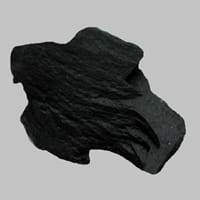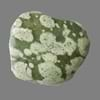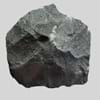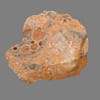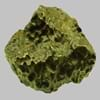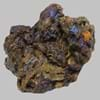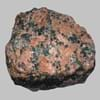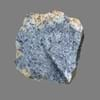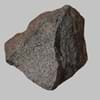Definition
Variolites are a group of dark green basic igneous rocks which exhibit pale colored spots, or spherules, especially on weathered surfaces, that give them a pockmarked appearance
Lignite is a soft brownish coal which shows traces of plants and is intermediate between bituminous coal and peat
Discoverer
Unknown
Unknown
Etymology
From Latin varius, speckled, variegated
From French, Latin lignum wood + -ite1
Class
Igneous Rocks
Sedimentary Rocks
Sub-Class
Durable Rock, Hard Rock
Durable Rock, Soft Rock
Group
Volcanic
Not Applicable
Other Categories
Opaque Rock
Coarse Grained Rock, Fine Grained Rock, Medium Grained Rock, Opaque Rock
Texture
Glassy, Massive, Porphyritic, Scoriaceous, Vesicular
Amorphous, Glassy
Color
Black, Brown, Light to Dark Grey
Black, Brown, Dark Brown, Grey, Light to Dark Grey
Durability
Durable
Durable
Appearance
Dull and Soft
Veined or Pebbled
Interior Uses
Floor Tiles, Flooring, Homes, Hotels, Kitchens
Not Yet Used
Exterior Uses
Garden Decoration, Office Buildings
Not Yet Used
Other Architectural Uses
Curbing
Not Yet Used
Construction Industry
As Dimension Stone, Cobblestones, Rail Track Ballast, Roadstone
for Road Aggregate, Steel Production
Medical Industry
Not Yet Used
Not Yet Used
Antiquity Uses
Artifacts, Monuments, Sculpture
Not Yet Used
Commercial Uses
Cemetery Markers, Creating Artwork
Electricity Generation
Types
Not Available
Xyloid Lignite or Fossil Wood and Compact Lignite or Perfect Lignite
Features
Has High structural resistance against erosion and climate, Very fine grained rock
Generally rough to touch, Helps in production of Heat and Electricity, Used as fossil fuel
Archaeological Significance
Monuments
Used
Not Yet Used
Famous Monuments
Data Not Available
Not Applicable
Sculpture
Used
Not Yet Used
Famous Sculptures
Data Not Available
Not Applicable
Figurines
Used
Not Yet Used
Formation
Variolites are a group of dark green basic igneous rocks that exhibit pale colored spots on weathered surfaces that give them a pockmarked appearance.
Coal formation takes place due to accumulation of plant debris in a swamp environment. The Coal formation process continues, as peat turns into lignite brown or black coal at increasing heat and pressure.
Mineral Content
Olivine, Plagioclase, Pyroxene
Not Available
Compound Content
Aluminium Oxide, CaO, Iron(III) Oxide, FeO, Potassium Oxide, MgO, MnO, Sodium Oxide, Phosphorus Pentoxide, Silicon Dioxide, Titanium Dioxide
Carbon, Hydrogen, Nitrogen, Oxygen, Sulphur
Types of Metamorphism
Burial Metamorphism, Cataclastic Metamorphism, Contact Metamorphism, Hydrothermal Metamorphism, Impact Metamorphism, Regional Metamorphism
Not Applicable
Types of Weathering
Biological Weathering, Chemical Weathering, Mechanical Weathering
Biological Weathering, Chemical Weathering, Mechanical Weathering
Types of Erosion
Not Applicable
Chemical Erosion, Water Erosion, Wind Erosion
Grain Size
Not Applicable
Medium to Fine Coarse Grained
Fracture
Conchoidal
Conchoidal
Streak
White to Grey
Black
Porosity
Less Porous
Highly Porous
Luster
Not Available
Dull to Vitreous to Submetallic
Compressive Strength
Not Available
Cleavage
Not Available
Non-Existent
Toughness
2.3
Not Available
Specific Gravity
2.8-3
1.1-1.4
Transparency
Opaque
Opaque
Density
2.9-3.1 g/cm3
800-801 g/cm3
Resistance
Heat Resistant, Pressure Resistant, Wear Resistant
Heat Resistant
Deposits in Eastern Continents
Asia
India, Russia
Bangladesh, Burma, Cambodia, China, India, Indonesia, Kazakhstan, Malaysia, Mongolia, Pakistan, Turkey, Vietnam
Africa
South Africa
Botswana, Kenya, Morocco, Mozambique, South Africa, Tanzania
Europe
Iceland
Belgium, Bulgaria, England, France, Germany, Greece, Hungary, Kosovo, Netherlands, Norway, Poland, Romania, Serbia, Slovakia, Slovenia, The Czech Republic, Ukraine, United Kingdom
Others
Not Yet Found
Not Yet Found
Deposits in Western Continents
North America
Canada, USA
Canada, Mexico, USA
South America
Brazil
Brazil, Chile, Colombia, Venezuela
Deposits in Oceania Continent
Australia
Not Yet Found
New South Wales, Queensland, Victoria
All about Variolite and Lignite Properties
Know all about Variolite and Lignite properties here. All properties of rocks are important as they define the type of rock and its application. Variolite belongs to Igneous Rocks while Lignite belongs to Sedimentary Rocks.Texture of Variolite is Glassy, Massive, Porphyritic, Scoriaceous, Vesicular whereas that of Lignite is Amorphous, Glassy. Variolite appears Dull and Soft and Lignite appears Veined or Pebbled. The luster of Variolite is not available while that of Lignite is dull to vitreous to submetallic. Variolite is available in black, brown, light to dark grey colors whereas Lignite is available in black, brown, dark brown, grey, light to dark grey colors. The commercial uses of Variolite are cemetery markers, creating artwork and that of Lignite are electricity generation.
